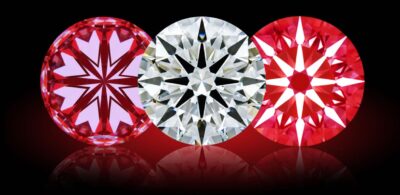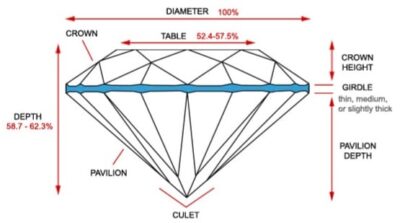Diamond proportioning began in 1919 when a mathematician named Tolkowsky used numerical formulas to achieve the modern brilliant cut. He did this by cutting a diamond so that all light entering the stone followed a controlled path to exit the top of the diamond. In 1919 the diamond cutting industry was not advanced enough to apply Tolkowky’s mathematical angles and dimensions. Instead it used variations of the cut, based on what the technology of the time could do. As technology advanced, so did the ability to better approximate the ideal Tolkowsky cut, which provides the best return of light in a diamond. It is possible for an experienced diamond grader to estimate, within a decade, when an older diamond was cut by observing where on the technology timeline its proportioning falls and how well it achieves Tolkowsky’s ideal cut formula. The best cut casts a perfect shadow on a wall when a beam of light is shone on it. Very few will do that because, due to many factors, most diamonds deviate from the perfect cut. The perfect cut diamond is difficult to achieve, and many people differ as to what is a perfectly cut diamond.

Diamond Cut Grading
Diamond Reflecting Light in a properly cut diamond, all light entering, no matter from what direction or angle, will always exit out the top of the stone ,this is what makes a diamond sparkle. The Cut is the most important element to reflect brilliance. The sparkling quality of the ideal cut is to be determined by 3 separate factors:
1. Proportions
2. Polish
3. Symmetry of all facets Ideal Cut :

How Diamond Laboratories grade Cut:
1. Proportions : Excellent
2. Polish : Excellent
3. Symmetry : Excellent
4. Hearts and Arrows
Premium Ideal Cut: Art of cutting (Hearts & Arrows ) with Triple Excellent
